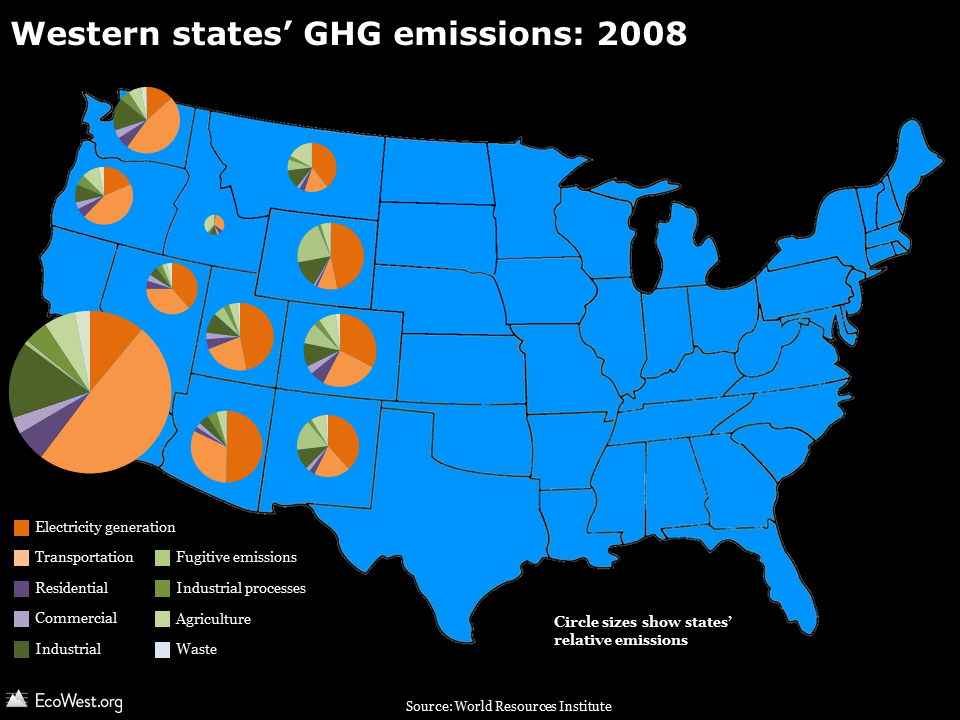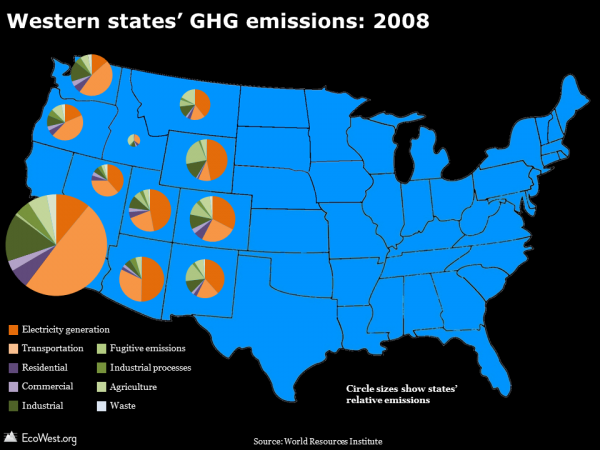One of the great challenges in reducing greenhouse gas (GHG) emissions is that the pollution emanates from so many activities and economic sectors. In this set of slides, we examine the sources of heat-trapping GHGs, with a focus on Western states.
Greenhouse gas emissions overview from EcoWest on Vimeo.
Nationally, nearly one third of GHG emissions come from providing electricity and heat to buildings, and more than one quarter is from transportation, mostly driving. GHG emissions have risen steadily since 1990, with growth slowing in the mid-2000s, partly due to efficiency improvements in the transportation and electricity sectors, and also thanks to a slowing economy.
Using data from the World Resources Institute, we found that on average since 1990 the West has contributed 15-17% of national GHG emissions. Overall, the source profile for the West is very similar to that of the United States as a whole, but there are some important state-by-state differences. With an enormous economy and population, California leads the pack in GHG emissions, but power generation accounts for a much smaller share of those emissions than it does in states in the inland West. One major reason is that California imports a good deal of power from places like the Four Corners states. California also produces substantial electricity from hydropower dams and other renewable sources.
Transportation accounts for nearly half of California’s GHG emissions, in part due to the high level of auto-dependence in such a large, sprawling state, but also due to the presence of major transport hubs, such as the massive ports of Los Angeles and Long Beach.
On the bright side, California leads the country in per capita energy efficiency. The state’s 37 million residents use 6,700 kilowatts yearly on average, while the 25 million residents in Texas consume an average of 14,000 kilowatts a year. Wyoming residents use a whopping 27,000 kilowatts per capita annually.
Western states not only vary in their emissions profiles and energy efficiency; they also absorb widely varying amounts of carbon dioxide from the atmosphere. Heavily forested states, such as Washington and Oregon, have some of the largest carbon sinks, while states in the arid Southwest, such as Arizona and New Mexico, have much less vegetation to soak up all that carbon we’re emitting.
Downloads
- Download Slides: Greenhouse Gas Emissions Overview (5276 downloads )
- Download Notes: Greenhouse Gas Emissions Overview (4455 downloads )
- Download Data: Air Pollution Overview (9424 downloads )
EcoWest’s mission is to analyze, visualize, and share data on environmental trends in the North American West. Please subscribe to our RSS feed, opt-in for email updates, follow us on Twitter, or like us on Facebook.


